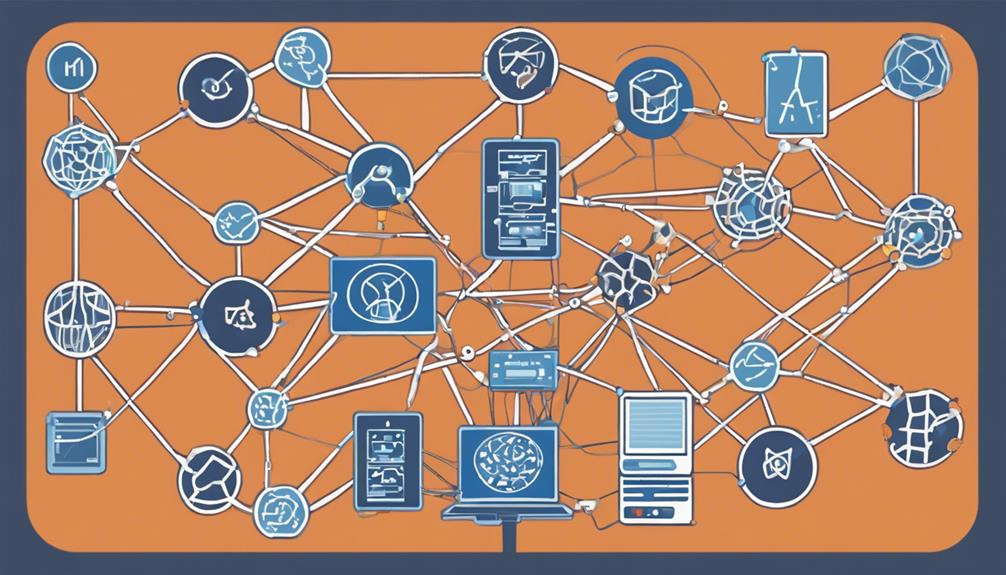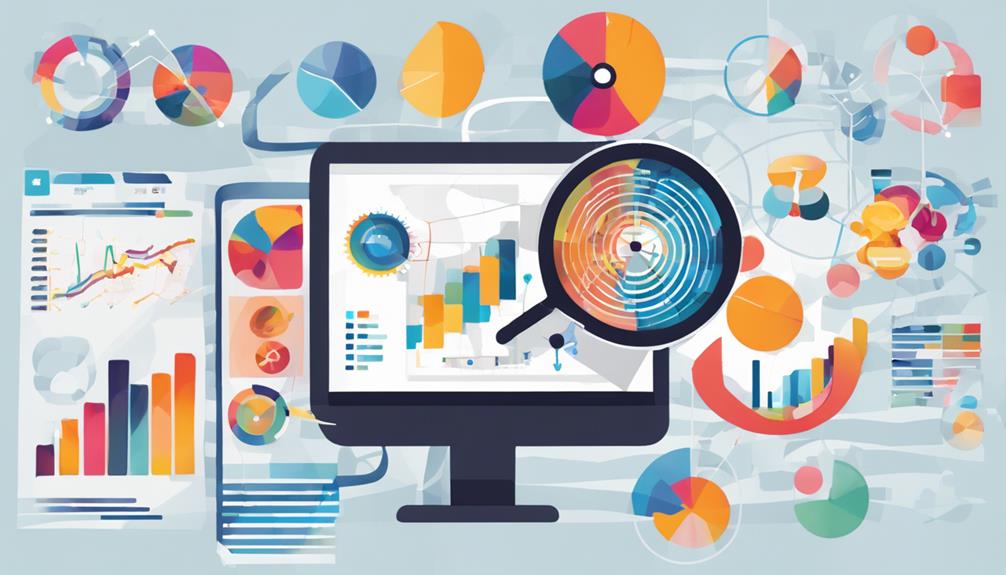So, you’ve probably heard the term “web data mining” thrown around but aren’t quite sure what it entails. Well, imagine being able to sift through the vast expanse of online information to uncover hidden insights that could potentially revolutionize decision-making processes and give you a competitive edge. Intrigued? Let’s shed some light on this intriguing field and explore how web data mining is shaping our digital world.
Definition of Web Data Mining
When delving into the realm of Web Data Mining, it is essential to grasp the core concept of this field. Web Data Mining involves the automated process of extracting valuable information from vast amounts of data available on the internet. Data extraction is a fundamental aspect of this process, where relevant data is identified and collected from various web sources. This extracted data is then subjected to analysis to uncover patterns, trends, and insights that can aid in decision-making processes.
Information retrieval plays a crucial role in Web Data Mining as well. It focuses on retrieving specific information from the extracted data that aligns with the user’s needs or the objectives of the mining process. Through effective information retrieval techniques, users can efficiently access the desired data and derive meaningful conclusions from it.
Purpose of Web Data Mining
The primary objective of Web Data Mining is to extract valuable insights and patterns from the vast expanse of data available on the internet. Through data extraction and analysis, this process aims to uncover hidden information, facilitate information retrieval, and enable pattern recognition. By utilizing various techniques and algorithms, Web Data Mining allows businesses and researchers to make informed decisions, predict future trends, and enhance strategic planning based on the analyzed data.
Data extraction involves collecting data from multiple sources, including websites, social media platforms, and online databases. This raw data is then processed through data analysis techniques to identify correlations, trends, and anomalies. Information retrieval plays a crucial role in Web Data Mining by enabling users to access relevant data efficiently. Pattern recognition helps in identifying recurring patterns within the data, leading to the discovery of meaningful insights that can drive decision-making processes.
In essence, the purpose of Web Data Mining is to transform unstructured data into actionable information that can provide a competitive advantage and drive innovation in various fields.
Techniques Used in Web Data Mining
Various techniques play a crucial role in the field of Web Data Mining, allowing analysts to extract valuable insights from the vast amount of data available online. When it comes to Web Data Mining, two key techniques stand out: data extraction and pattern recognition. Here are five essential techniques used in Web Data Mining:
- Web Scraping: This technique involves extracting data from websites by using automated tools to collect information.
- Text Mining: Text mining techniques are employed to analyze unstructured data from sources such as social media, emails, and reviews to uncover patterns and trends.
- Clustering: Clustering algorithms group similar data points together based on predefined characteristics, aiding in identifying patterns within large datasets.
- Classification: Classification techniques categorize data into predefined classes, enabling the prediction of trends or outcomes.
- Association Rule Learning: This technique identifies relationships between variables in large datasets, helping to discover hidden patterns and correlations.
Tools for Web Data Mining
Utilizing the right tools is essential in the field of Web Data Mining to effectively extract and analyze data from the vast online sources available. Data extraction tools play a crucial role in collecting data from websites, APIs, and other online repositories. These tools automate the process of data collection, saving time and ensuring accuracy. Popular data extraction tools include Import.io, Octoparse, and WebHarvy, each offering unique features to cater to different data mining needs.
Once the data is collected, data analysis software comes into play to make sense of the information gathered. Data analysis software like Tableau, RapidMiner, and KNIME assist in sorting, cleaning, and visualizing the extracted data. These tools provide statistical analysis, predictive modeling, and data visualization capabilities, enabling data miners to derive valuable insights from the collected data.
Applications and Benefits of Web Data Mining
To fully leverage the data extracted using tools like Import.io and Tableau, understanding the applications and benefits of Web Data Mining is key. Web Data Mining offers a plethora of advantages for businesses looking to enhance their strategies and decision-making processes. Here are five key applications and benefits of Web Data Mining:
- Market analysis: Web Data Mining enables businesses to analyze market trends, competitor activities, and consumer behavior to make informed decisions.
- Customer segmentation: By utilizing Web Data Mining techniques, businesses can segment their customer base effectively, tailor their marketing strategies, and personalize customer experiences.
- Improved decision-making: Web Data Mining provides valuable insights that aid in making data-driven decisions, leading to increased efficiency and profitability.
- Enhanced customer satisfaction: By understanding customer preferences and behavior through data mining, businesses can improve their products and services to better meet customer needs.
- Competitive advantage: Utilizing Web Data Mining allows businesses to stay ahead of the competition by identifying new opportunities, trends, and threats in the market landscape.
Frequently Asked Questions
Can Web Data Mining Be Used for Predicting Future Trends?
Sure can! Web data mining is a goldmine for predictive analytics. By analyzing vast amounts of online data, you can uncover patterns, behaviors, and correlations that help forecast future trends with remarkable accuracy.
How Is the Privacy of Individuals Protected in Web Data Mining?
To ensure privacy protection in web data mining, individuals’ data security is paramount. Encryption techniques, anonymization processes, and strict access controls are implemented. By safeguarding personal information, organizations uphold ethical standards and build trust with users.
Are There Any Ethical Considerations in Web Data Mining Practices?
Consider the ethical implications of web data mining practices. Ensure data protection measures are in place to safeguard privacy rights. Be vigilant in upholding ethical standards to maintain trust and integrity in the digital realm.
What Are the Challenges Faced in Implementing Web Data Mining?
In implementing web data mining, challenges arise with data accuracy and integration. You must navigate complexities in ensuring information reliability and merging diverse data sources. These obstacles demand strategic planning and meticulous execution for success.
How Does Web Data Mining Contribute to Improving Customer Experiences?
To enhance customer experiences, web data mining empowers you to personalize strategies based on customer behavior insights. It acts as a compass guiding you through the digital terrain, illuminating pathways to exceed customer expectations.



